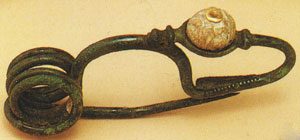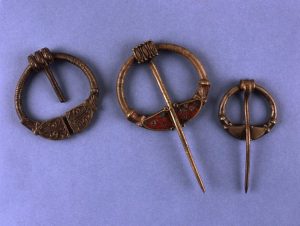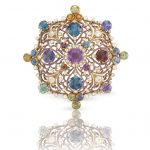Celtic Brooches
Celtic brooches had a style which was distinctive and still popular today. They were predominantly functional items, although still extremely decorative.

Photo: 7000 Years of Jewellery
Celtic styles and traditions were found in parts of Europe throughout the Roman period and reappeared just before the medieval era.
Celtic brooches were often made of bronze but some were also made in gold, silver and iron.
Many Celtic brooches were decorated with red enamel, red coral inlays, cloisonne or champlene enamelling. Some brooches had more than one of these techniques.
During the Migration period (fourth to eighth centuries AD), many brooches and other jewellery were inlaid with richly coloured stones.
Brooches are probably one of the most common items of jewellery which have been found by archeologists, which is probably due to their functionality as well as decorative purpose.

Celtic brooches were often worn as cloak-fasteners on both shoulders. Celtic brooches are also referred to as penannual brooches.
Both penannular and pseudo-penannular brooches feature a long pin attached by its head to a ring; the pin can move freely around the ring as far as the terminals, which are close together. In the true penannular type, the ring is not closed; there is a gap between the terminals wide enough for the pin to pass through. In the pseudo-penannular type, the ring is closed, but there are still two separately defined terminals, which are joined by a further element. The penannular type is a simple and efficient way of fastening loosely woven cloth (where the pin will not leave a permanent hole), but the pseudo-penannular type is notably less efficient.
Celtic brooches acted as a safety-pin where the pin was secured in a catch-plate at the foot of the brooch and a bow would link the foot and spring.
Celtic brooches were usually cast in one piece.


